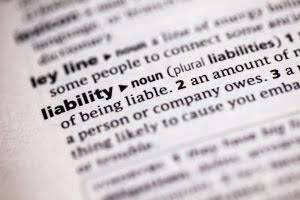
Payment gateways, payment processors, and even ACH payment APIs can also be regarded as ODFIs. Reducing the risk of returns and fraud starts by following Nacha guidelines and leveraging new technology like instant account verification and IDV. However, the most effective way to prevent ACH returns and fraud is by catching returns before they occur through ACH risk scoring. Understanding who initiates the code is important due to how long the payment may take to be returned. Bank-initiated codes are generally returned in two to three days while customer-initiated codes can take 60 days or longer. The standard credit card is valid for just two to five years, while bank accounts are often used for decades.
- ACH return codes are a reality if you rely on ACH payment processing to accept customer transactions.
- Businesses can set customized risk profiles based on their customers or industry.
- The most frequent return code, representing 40-50% of all ACH returns.
- These codes work in conjunction with SEC codes to define the complete transaction type and processing requirements.
International ACH Return Reason Codes (R80-R
The first ten codes listed above should be studied because you are more likely to come across them in your day-to-day ACH payments. Nonetheless, you refer back to this article whenever you encounter codes that you are not familiar with. This code means that the recipient has informed the RDFI that the Entry is either improper, unauthorized, ineligible ach return or just forms a portion of an incomplete transaction.
- Built on robust technology, LendSaaS delivers powerful solutions that help you manage the entire lending lifecycle, from MCA origination and underwriting to servicing and collections.
- This integration is just one of many that LendSaaS offers to streamline your operations and deliver an outstanding lending experience.
- ACH APIs enable companies with high transaction volumes to write software that automates payments over the ACH network.
- If this occurs, then recovery will have to be done outside of the ACH network.
- When you receive an ACH return code as a business processing a customer payment, you’ll need to communicate with both the bank as well as your end customer.
- Another risk can result if the entity collecting a payment “fronts” or gives credit to the end user (such as when a new account is funded) before the ACH transaction settles.
- Essentially, a customer’s bank account details may change as a result of changes made in bank mergers, account numbering schemes, and so on.
ACH Return Code R85 – Incorrectly Coded Outbound International Payment

ACH Return and Notification of Change (NOC) codes, time-frames, and applicable external account types. More small and medium-sized businesses than ever are switching to ACH payments. Modern ACH payment platforms also offer built-in tools to detect and prevent common errors.
Recent NACHA Rule Changes
- The originating depository financial institution (ODFI) has requested the return of the entry.
- Some of the frequent reasons include that the customer has insufficient funds, an invalid account number, or revoked authorization.
- Discover how to pay vendors and receive customer payments via ACH with BILL.
- Call the customer to verify the account number, routing number, and specific name.
- R11 is used specifically for returns related to check truncation entries, indicating issues with the conversion of a physical check into an electronic transaction.
- There are over 80 different ACH return codes that differ based on the nature of the problem.
- If you need to debit the same bank account, instruct your customer to call the bank and remove the block on transactions.
ACH return codes are listed in the return entry notification sent by the RDFI to the ODFI. Each code consists of the letter ‘R’ followed by a two-digit number (e.g., R01, R02). These codes are standardized by NACHA, and financial institutions often provide detailed reports with these return codes. Mastering the management of ACH return codes is essential for businesses aiming to optimize their payment processes and maintain financial health. These codes provide invaluable insights into transaction issues, enabling businesses to address and resolve problems swiftly.
Why understanding ACH return codes is important for your business
Banks can send a number of notifications along with the success or failure confirmations of a payment. Below we Online Accounting walk through the various types of Returns and Notification of Changes you may experience with a bank. This means that although there’s a sufficient ledger balance to satisfy the dollar value of the transaction, the available balance is below this dollar value. This means that the ODFI made a request for the RDFI to return the ACH Entry. This means that although the structure of the account number is valid, the account number doesn’t match up with the individual identified in the Entry. From now on you’ll get paid on time, every time, as GoCardless automatically collects payment on the scheduled Direct Debit collection date.
Best Practices for Managing ACH Return Codes
Manual invoice chasing is costly and prone to errors, which can result in frequent ACH return codes. Automating ACH payments can significantly streamline this process and reduce the incidence of return codes. The identification number for the foreign receiving depository financial institution (DFI) is incorrect. The originator must verify and correct the DFI identification details before resubmitting.
R03 – No Account/Unable to Locate Account

Some of the common reasons include an invalid account number, insufficient funds, or revoked authorization. Instant account verification uses an API to directly connect to a user’s bank accounts to verify the account is active and in good standing. This allows companies to set up frictionless ACH payments in seconds, rather than hoping users enter the information correctly and waiting for ACH return codes to indicate an issue. Customer-initiated return codes are sent when the customer takes action to cancel or revoke an ACH transaction from their account. Depending on the reason for the return, customers may have up to 60 days from settlement to refute an ACH payment.

Generally speaking, ACH return codes have a turnaround time of two banking days. However, certain ACH return reason codes may have a slightly longer turnaround time. For instance, unauthorized debits to https://www.bookstime.com/ consumer accounts tend to have a 60-day return timeframe, as banking regulations are relatively consumer-friendly.